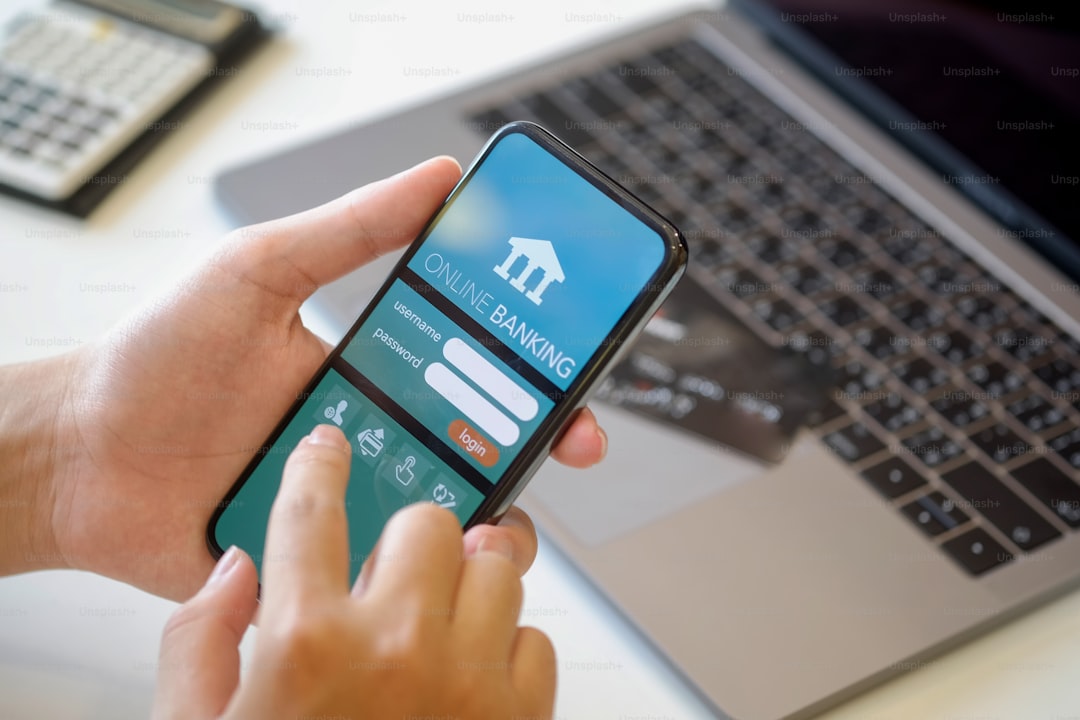Mastering Remote Collaboration Across Time Zones with Essential Productivity Tools

Introduction
Remote work has moved from a niche perk to a core component of modern business strategy. Companies with distributed teams can tap into talent pools that span continents, cultural perspectives, and market insights. The upside is clear: faster innovation cycles, lower overhead, and the ability to operate 24 hours a day as work hands off across borders.
The hidden cost, however, is the friction that time‑zone differences create. Meetings clash, deadlines slip, and the sense of shared momentum can evaporate when a team is spread across the globe. Mastering remote collaboration across time zones is less about miracle and more about disciplined processes, the right set of tools, and a mindset that values asynchronous work as much as real‑time interaction.
In this article we will explore the psychological and logistical challenges of multi‑zone collaboration, outline proven strategies to mitigate them, and dive deep into the essential productivity tools that keep teams aligned, accountable, and efficient. By the end you will have a practical playbook you can roll out immediately, whether you are a solo freelancer coordinating with clients worldwide or a large organization managing dozens of cross‑functional squads.
The Core Challenges of Working Across Time Zones
Misaligned Working Hours
When one team member starts their day, another may be winding down. The overlap window—those few hours when both sides are online—can be as short as one or two hours, or even zero in extreme cases. This limited overlap makes real‑time conversation expensive and often forces a reliance on email or chat, which can be slower and more ambiguous.
Communication Latency
Even with instant messaging, the delay in response can create uncertainty. A question posted at 9 am in New York might not receive an answer until the next day in Berlin. This latency can stall decision‑making and erode trust if not managed properly.
Cultural and Language Nuances
Time‑zone diversity often coincides with cultural diversity. Phrasing that is perfectly clear in one locale may be misinterpreted elsewhere. Without intentional effort, misunderstandings can compound the logistical friction already present.
Visibility and Accountability
When work is handed off across borders, it is easy for tasks to fall through the cracks. Managers may struggle to maintain visibility into progress, and contributors may feel disconnected from the larger mission.
Burnout Risk
The pressure to be “always on” in order to accommodate distant teammates can lead to irregular sleep patterns and burnout. Teams that do not set clear expectations around availability often see a decline in morale over time.
Foundational Principles for Seamless Multi‑Zone Collaboration
Prioritize Asynchronous Work
Design processes that do not require immediate responses. Use clear documentation, recorded demos, and detailed task descriptions to let people work independently within their own daylight hours.
Define Overlap Hours Strategically
Identify the smallest window of mutual availability that satisfies critical real‑time needs such as stand‑ups or sprint planning. Keep these meetings short, well‑structured, and purposeful.
Establish a Shared Calendar Culture
Every team member should maintain an up‑to‑date calendar that reflects not only meetings but also “focus blocks” and personal time zones. Use a unified calendar view to avoid accidental scheduling conflicts.
Set Explicit Communication Protocols
Agree on which channels are used for which types of information. For example, urgent issues may go to a dedicated Slack channel, while detailed project updates belong in a project‑management tool.
Normalize “No‑Response” Windows
Make it clear that a response is not expected outside of a person’s working hours unless marked as urgent. This reduces pressure to reply at odd hours and protects work‑life balance.
Document Decisions Rigorously
Every decision made during overlap meetings should be recorded in a single source of truth—whether that is a Confluence page, a Notion database, or a shared Google Doc. This ensures that teammates who missed the live discussion can catch up quickly.
Essential Productivity Tools
Below is a curated list of tools, grouped by function, that address the challenges outlined above. Each tool is evaluated on its ability to support asynchronous collaboration, time‑zone awareness, and overall productivity.
Communication
- Slack / Microsoft Teams – Real‑time chat platforms with robust integrations. Use dedicated channels for urgent alerts, project discussions, and casual water‑cooler talk. Both support status indicators (e.g., “away”, “do not disturb”) that help teammates respect off‑hours.
- Zoom / Google Meet – Video conferencing for the limited overlap meetings. Record every session and store the video in a shared drive so those who cannot attend can watch later.
- Loom – Quick video messaging for walkthroughs, design reviews, or explanations that would otherwise require a meeting. Recipients can watch at their convenience and leave time‑stamped comments.
Project Management
- Asana / ClickUp / Trello – Visual task boards that allow you to assign owners, set due dates, and attach relevant files. Time‑zone support is built in, showing due dates relative to each user’s locale.
- Jira – Ideal for software teams following Agile methodologies. Features like “sprint backlog” and “velocity chart” help distributed squads stay aligned on incremental delivery.
- Monday.com – Highly customizable workflows that can be tailored to marketing, product, or ops teams. The timeline view makes it easy to see how tasks line up across different regions.
Scheduling and Time‑Zone Management
- World Time Buddy – An interactive visual converter that lets you compare multiple time zones side‑by‑side. Great for finding overlap windows before scheduling meetings.
- Calendly – Self‑service scheduling that automatically adjusts for each participant’s time zone. You can set “buffer times” to ensure meetings never bleed into focus blocks.
- Google Calendar (with Time Zone support) – Enables you to create events in any time zone and have them automatically displayed in each user’s local time. Use the “Find a time” feature to locate overlap.
File Sharing and Collaboration
- Google Workspace (Docs, Sheets, Slides) – Real‑time co‑editing with version history. Comments can be left for asynchronous review, and “suggestion mode” allows reviewers to propose changes without overwriting the original content.
- Notion – All‑in‑one workspace for notes, wikis, and lightweight databases. Its flexible page hierarchy makes it easy to build a knowledge base that anyone can navigate at any time.
- Dropbox / OneDrive – Cloud storage with granular permission controls. Useful for large media assets that exceed the size limits of other platforms.
Automation and Integration
- Zapier / Make (formerly Integromat) – Connect disparate apps without writing code. Example: When a new task is created in Asana, automatically post a notification in a Slack channel and add a calendar event for the assignee.
- Slack Workflow Builder – Build simple automations directly inside Slack, such as a form that gathers daily stand‑up updates and posts them to a dedicated channel.
- GitHub Actions – For development teams, automate testing, deployment, and code review notifications across time zones.
Time‑Tracking and Focus
- Toggle Track – Simple timer that helps individuals log hours spent on specific projects. The data can be aggregated to see how much time is actually being spent in overlap versus asynchronous work.
- RescueTime – Provides insights into where attention is going, highlighting distractions that may be amplified when working alone in different time zones.
- Focus@Will / Brain.fm – Audio services that aid concentration during deep‑work blocks, which are especially valuable when you have limited overlap for collaboration.
Building an Asynchronous‑First Workflow
Step 1: Map Out Overlap Windows
- List all team members with their primary work hours and time zones.
- Use World Time Buddy or a shared spreadsheet to visualize the overlap.
- Identify a core 1‑2 hour window that works for the majority. If no common window exists, consider rotating the meeting time each sprint so the burden is shared.
Step 2: Define Communication Cadences
- Daily Updates – Use a Slack thread or a Notion page where each person posts a brief status update at the end of their day. This replaces a traditional stand‑up that would otherwise require synchronous attendance.
- Weekly Sync – Reserve the identified overlap window for a concise video call (30 minutes max). Focus on decisions that need immediate consensus, such as sprint goals or product launches. Record the meeting and attach the recording to the meeting notes.
- Ad‑hoc Alerts – Mark urgent messages with a clear prefix, e.g., “[URGENT] Server down”. This signals that a rapid response is required, even outside normal hours.
Step 3: Adopt Structured Documentation
Create a template for meeting notes that includes:
- Attendees
- Date & Time (with time‑zone reference)
- Agenda Items
- Decisions Made
- Action Items (owner, due date, related time zone)
- Next Steps
Store these notes in a searchable location such as Confluence or Notion. Tag them with relevant project labels so teammates can locate them without digging.
Step 4: Leverage Recorded Walkthroughs
When a design mockup or a code review needs explanation, record a short Loom video (2‑5 minutes). Include captions for clarity. Share the link in the appropriate Slack channel and reference the video in the project task. This reduces the need for a live screen share that would span inconvenient hours.
Step 5: Automate Routine Updates
Set up a Zapier workflow that triggers when a task status changes in Asana:
- Post a message in the project Slack channel summarizing the change.
- Add a comment in the corresponding Notion page.
- Update the team calendar with any new due dates.
Automation ensures that information flows automatically, keeping everyone in the loop without manual effort.
Best Practices for Managing Time‑Zone Differences
- Use UTC for all timestamps in documentation – When writing meeting minutes or task due dates, include the UTC offset. This eliminates confusion when team members are traveling or when daylight‑saving changes occur.
- Avoid “right now” language – Instead of saying “Can you do this right now?” phrase it as “Can you complete this by the end of your workday (UTC‑4)?”
- Respect “focus time” blocks – Encourage team members to block out periods for deep work on their calendars. Treat these blocks as non‑negotiable unless there is a true emergency.
- Rotate meeting times – If a fixed meeting consistently favors one region, rotate the schedule every few weeks so the inconvenience is shared. Document the rotation schedule in a shared calendar.
- Encourage status updates before end of day – A brief “What I did today / What I will do tomorrow” note helps teammates know where a project stands before the next overlap.
- Create a “time‑zone buddy” system – Pair members from different regions to serve as informal liaisons. The buddy can surface potential blockers and ensure that information is handed off smoothly.
Case Study: Global Marketing Team
Background
A multinational consumer goods company launched a new product line. The marketing team consisted of copywriters in London, designers in New York, social media managers in Singapore, and data analysts in Sydney. The project timeline was six weeks, with a critical launch date fixed to a global event.
Challenges
- Only a 1‑hour overlap between London and Singapore.
- Frequent last‑minute content approvals causing delays.
- Misaligned expectations about “working hours” leading to overtime for the Singapore team.
Solution Implemented
- Asynchronous Briefing Hub – The team created a Notion workspace titled “Launch Hub”. All briefs, brand guidelines, and asset requests were uploaded there with clear deadlines displayed in UTC.
- Loom Walkthroughs for Creative Review – Designers recorded short video tours of each concept, explaining rationale and noting specific feedback points. Copywriters left comments directly in the Figma file.
- Scheduled “Launch Sync” – A 90‑minute weekly Zoom call was set for 10 am London time (2 pm New York, 8 pm Singapore). The agenda was locked to three items: final asset approval, media spend allocation, and data reporting setup.
- Automation via Zapier – When a designer marked an asset as “Ready for Review” in ClickUp, a Slack message was automatically sent to the copywriters, and the asset link was added to the Notion hub.
- Time‑Zone Buddy Pairing – Each London copywriter was paired with a Singapore social media manager. The buddy would relay any urgent changes overnight via a dedicated Slack channel.
Results
- Content approval cycle reduced from 48 hours to 12 hours.
- No team member logged overtime beyond their normal schedule.
- Launch metrics exceeded targets by 15 percent, attributed to the synchronized rollout across regions.
This case demonstrates how a disciplined asynchronous workflow, combined with targeted real‑time touchpoints, can turn time‑zone diversity into a strategic advantage.
Checklist for Remote Teams Working Across Time Zones
- [ ] List every team member’s location and preferred working hours.
- [ ] Set up a shared calendar view that displays each event in the participant’s local time.
- [ ] Choose a primary communication platform and define channel purposes.
- [ ] Create a “Meeting Recordings” folder in Google Drive or Dropbox and enforce a policy to upload every video call.
- [ ] Implement a daily status update routine in Slack or Notion.
- [ ] Record a brief Loom video for every major deliverable that requires explanation.
- [ ] Configure Zapier or Make automations for task status changes, calendar events, and Slack notifications.
- [ ] Establish a “No‑Response” policy that specifies acceptable response windows for different priority levels.
- [ ] Conduct a quarterly review of overlap windows and adjust meeting times as needed.
- [ ] Provide training on time‑zone etiquette, including how to write clear, time‑zone‑aware messages.
Measuring Success
To know whether your remote collaboration strategy is working, track both quantitative and qualitative metrics.
Quantitative
- Average time to resolve tickets – Shorter times indicate smoother handoffs.
- Meeting duration vs. agenda items covered – Efficient meetings stay within the planned time box.
- Percentage of tasks completed within the original estimate – Reflects realistic planning across zones.
- Overtime hours logged – Aim for zero or minimal overtime to protect work‑life balance.
Qualitative
- Team satisfaction surveys – Ask about clarity of communication, perceived fairness of meeting times, and overall stress levels.
- Retrospective feedback – Capture comments on what worked and what didn’t after each sprint or project phase.
- Client or stakeholder sentiment – Positive external feedback often correlates with internal alignment.
Regularly reviewing these data points will help you fine‑tune processes, adopt new tools, and reinforce the habits that keep distributed teams productive.
Future Trends in Global Remote Collaboration
- AI‑Powered Summaries – Tools like Otter.ai and Fireflies.ai are already transcribing meetings and generating concise bullet‑point summaries. In the near future, AI will also flag action items and assign owners automatically.
- Virtual Workspaces – Platforms such as Spatial and Gather.town are creating immersive, shared “office” environments where teams can meet in a more natural, asynchronous way.
- Smart Time‑Zone Scheduling – Calendar apps are experimenting with machine‑learning algorithms that suggest optimal meeting times based on historical availability patterns.
- Integrated Wellness Features – Expect more collaboration suites to embed wellness checks, encouraging breaks and providing data on sleep and stress, which is crucial for teams spanning continents.
Staying aware of these developments will allow you to adopt innovations early, keeping your remote collaboration edge sharp.
Conclusion
Time‑zone differences are a reality of the global talent economy, but they do not have to be a barrier to high performance. By embracing an asynchronous‑first mindset, establishing clear communication protocols, and equipping your team with the right productivity tools, you can turn geographic spread into a strategic asset.
The framework presented—mapping overlap, structuring updates, leveraging recorded walkthroughs, automating routine flows, and respecting focus time—provides a repeatable formula that works for teams of any size. Pair this with a disciplined toolset that includes Slack, Loom, Asana, World Time Buddy, Notion, and Zapier, and you will see faster decision‑making, reduced burnout, and higher quality outcomes.
Remember that technology alone cannot solve cultural or behavioral challenges. Continuous feedback, transparent documentation, and a shared commitment to fairness across borders are the glue that holds the system together.
Apply the checklist, monitor the success metrics, and iterate as your team evolves. With intention and the right tools, mastering remote collaboration across time zones becomes not just possible, but a competitive advantage that fuels growth in a borderless world.
Random Posts

Eco Friendly Packing Strategies for Remote Workers
Discover how remote workers can shrink their carbon footprint with smart sustainable packing: minimal gear, reusable containers, waste free habits that boost mobility and productivity.
1 month ago

Finding the Perfect Cafe for Seamless Connectivity and Flexible Workspaces
Discover how to turn any coffee shop into a productive office with tips for reliable WiFi, plenty of outlets, comfy seating, quiet vibes and menu picks that boost focus. Your roadmap to the perfect remote work cafe.
2 months ago

Thriving on the Move Mental Wellness for Digital Nomads
Discover how digital nomads can turn constant travel into mental strength with practical habits, mindset shifts, and community tools that keep stress, anxiety, and loneliness at bay.
2 months ago

Essential Banking Solutions Every Digital Nomad Needs
Discover the must have banking tools for digital nomads: global access, low fees, strong security, tax compliance and crypto options. Learn how to set them up and avoid common pitfalls.
2 days ago

From Office to Anywhere Transitioning to a Remote Lifestyle
Discover how to swap your cubicle for any location with practical steps, mindset shifts, tech tools, and financial tips that turn remote work from a dream into a sustainable, thriving lifestyle.
2 months ago
Latest Posts

Essential Software Every Remote Professional Should Use
Master remote work with essential tools: instant messaging like Slack, high definition video calls such as Zoom, and asynchronous voice apps. Streamline communication, stay connected and boost productivity.
1 day ago

Mastering Remote Work Productivity for Digital Nomads and Freelancers
Learn proven habits, tools, and tactics that help digital nomads and freelancers stay focused, deliver quality work, and maintain a sustainable lifestyle while traveling the world.
1 day ago

Tech‑Friendly European Towns Perfect for Remote Living
Discover Europe’s best small towns where fast internet, affordable living and vibrant tech communities let you work remotely while soaking up historic charm, lakeside views or mountain air.
1 day ago